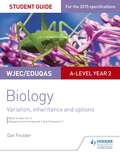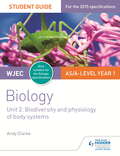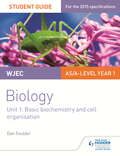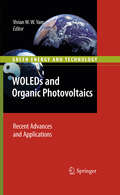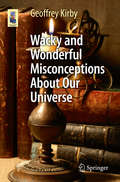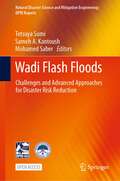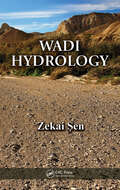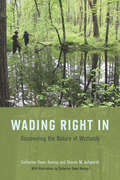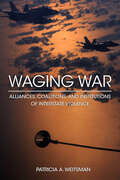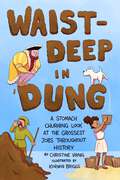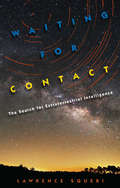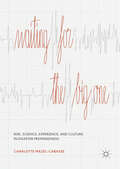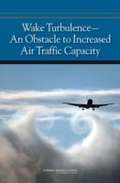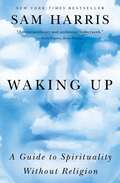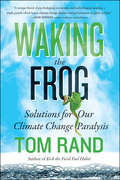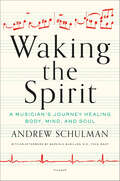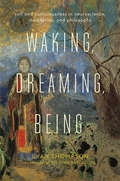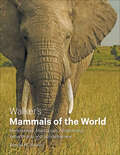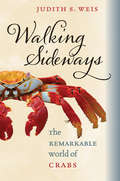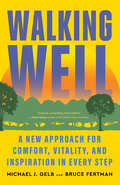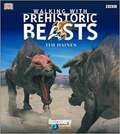- Table View
- List View
WJEC/Eduqas A-level Year 2 Biology Student Guide: Variation, Inheritance And Options
by Dan FoulderExam Board: WJEC, EduqasLevel: A-levelSubject: BiologyFirst Teaching: September 2015First Exam: Summer 2017Reinforce students' understanding throughout their course with clear topic summaries and sample questions and answers to help your students target higher grades.Written by experienced teacher Dan Foulder, our Student Guides are divided into two key sections, content guidance and sample questions and answers.Content guidance will:- Develop students' understanding of key concepts and terminology; this guide covers WJEC A-level Unit 4; Eduqas A-level Component 2 and Component 3.- Consolidate students' knowledge with 'knowledge check questions' at the end of each topic and answers in the back of the book.Sample questions and answers will:- Build students' understanding of the different question types, so they can approach each question with confidence.- Enable students to target top grades with sample answers and commentary explaining exactly why marks have been awarded.
WJEC/Eduqas A-level Year 2 Biology Student Guide: Variation, Inheritance and Options
by Dan FoulderWritten by experienced examiner Dan Foulder, this Student Guide for Biology:-Identifies the key content you need to know with a concise summary of topics examined in the A-level specifications-Enables you to measure your understanding with exam tips and knowledge check questions, with answers at the end of the guide-Helps you to improve your exam technique with sample answers to exam-style questions-Develops your independent learning skills with content you can use for further study and research.
WJEC/Eduqas AS/A Level Year 1 Biology Student Guide: Biodiversity and physiology of body systems
by Andy ClarkeExam Board: WJEC, EduqasLevel: AS/A-levelSubject: BiologyFirst Teaching: September 2015First Exam: Summer 2016Reinforce students' understanding throughout their course with clear topic summaries and sample questions and answers to help your students target higher grades.Written by experienced teacher Andy Clarke, our Student Guides are divided into two key sections, content guidance and sample questions and answers.Content guidance will:- Develop students' understanding of key concepts and terminology; this guide covers biodiversity and physiology of body systems.- Consolidate students' knowledge with 'knowledge check questions' at the end of each topic and answers in the back of the book.Sample questions and answers will:- Build students' understanding of the different question types, so they can approach each question with confidence.- Enable students to target top grades with sample answers and commentary explaining exactly why marks have been awarded.
WJEC/Eduqas Biology AS/A Level Year 1 Student Guide: Basic biochemistry and cell organisation
by Dan FoulderExam Board: WJEC, EduqasLevel: AS/A-levelSubject: BiologyFirst Teaching: September 2015First Exam: June 2016Reinforce students' understanding throughout their course with clear topic summaries and sample questions and answers to help your students target higher grades.Written by experienced teacher Dan Foulder, our Student Guides are divided into two key sections, content guidance and sample questions and answers.Content guidance will:- Develop students' understanding of key concepts and terminology; this guide covers basic biochemistry and cell organisation.- Consolidate students' knowledge with 'knowledge check questions' at the end of each topic and answers in the back of the book.Sample questions and answers will:- Build students' understanding of the different question types, so they can approach each question with confidence.- Enable students to target top grades with sample answers and commentary explaining exactly why marks have been awarded.
WOLEDs and Organic Photovoltaics
by Vivian W. YamThe search for renewable energy sources and the efficient utilization of energy have been the most important research areas in modern science and technology. The design and development of materials that can contribute to light-harvesting, solar energy conversion and photovoltaics are important areas of research. Also of great importance is the exploration of WOLEDs for solid state lighting that could lead to a more efficient utilization of energy. This monograph consists of a collection of contributions from prominent leading scientists in the area, initiated by the organization of the SRT Workshop on WOLEDs and Organic Photovoltaics at The University of Hong Kong in January 2009. This represents a unique and irresistibly attractive account and reference for researchers in the field of WOLEDs and organic photovoltaics both from academia and industry.
WTF, Evolution?!: A Theory of Unintelligible Design
by Mara GrunbaumWe all have our off days. Why should Evolution be any different? Maybe Evolution got carried away with an idea that was just a little too crazy—like having the Regal Horned Lizard defend itself by shooting three-foot streams of blood from its eyes. Or maybe Evolution ran out of steam (Memo to Evolution: The Irrawaddy Dolphin looks like a prototype that should have been left on the drawing board). Or maybe Evolution was feeling cheeky—a fish with hands? Joke’s on you, Red Handfish! Or maybe Evolution simply goofed up: How else to explain the overgrown teeth of the babirusas that curl backward over their face? Oops. Mara Grunbaum is a very smart, very funny science writer who celebrates the best—or, really, the worst—of Evolution’s blunders. Here are more than 100 outlandish mammals, reptiles, insects, fish, birds, and other creatures whose very existence leaves us shaking our heads and muttering WTF?! Ms. Grunbaum’s especially brilliant stroke is to personify Evolution as a well-meaning but somewhat oblivious experimenter whose conversations with a skeptical narrator are hilarious. For almost 4 billion years, Evolution has produced a nonstop parade of inflatable noses, bizarre genitalia, and seriously awkward necks. What a comedian!
Wacky and Wonderful Misconceptions About Our Universe (Astronomers' Universe)
by Geoffrey KirbyFrom unicorns on the Moon to UFOs piloted by Martian bees, this book chronicles some of the strangest ideas that have been put forward – and have actually been believed in -- about our universe. Drawn from tales dating from the Middle Ages to the present, this collection of stories takes readers on an imaginative and wild ride through the ages and minds of some of the wackiest, tackiest, most outlandish concepts in astronomy, cosmology and physics. Follow along as Geoff Kirby recounts each quirky idea in detail and explains how these theories fare against modern astronomical research and technologies.
Wadi Flash Floods: Challenges and Advanced Approaches for Disaster Risk Reduction (Natural Disaster Science and Mitigation Engineering: DPRI reports)
by Tetsuya Sumi Sameh A. Kantoush Mohamed SaberThis open access book brings together research studies, developments, and application-related flash flood topics on wadi systems in arid regions. The major merit of this comprehensive book is its focus on research and technical papers as well as case study applications in different regions worldwide that cover many topics and answer several scientific questions. The book chapters comprehensively and significantly highlight different scientific research disciplines related to wadi flash floods, including climatology, hydrological models, new monitoring techniques, remote sensing techniques, field investigations, international collaboration projects, risk assessment and mitigation, sedimentation and sediment transport, and groundwater quality and quantity assessment and management. In this book, the contributing authors (engineers, researchers, and professionals) introduce their recent scientific findings to develop suitable, applicable, and innovative tools for forecasting, mitigation, and water management as well as society development under seven main research themes as follows: Part 1. Wadi Flash Flood Challenges and Strategies Part 2. Hydrometeorology and Climate Changes Part 3. Rainfall–Runoff Modeling and Approaches Part 4. Disaster Risk Reduction and Mitigation Part 5. Reservoir Sedimentation and Sediment Yield Part 6. Groundwater Management Part 7. Application and Case Studies The book includes selected high-quality papers from five series of the International Symposium on Flash Floods in Wadi Systems (ISFF) that were held in 2015, 2016, 2017, 2018, and 2020 in Japan, Egypt, Oman, Morocco, and Japan, respectively. These collections of chapters could provide valuable guidance and scientific content not only for academics, researchers, and students but also for decision-makers in the MENA region and worldwide.
Wadi Hydrology
by Zekai SenThe literature of hydrology abounds with texts on the hydrological and water resource problems in humid regions. However, this is not the case for the arid or semi arid regions. The situation is exemplified by the fact a concrete definition for the termwadi as accepted by UNESCO for describing these areas, is difficult to find.Arguably the
Wading Right In: Discovering the Nature of Wetlands
by Catherine Owen Koning Sharon M. AshworthWhere can you find mosses that change landscapes, salamanders with algae in their skin, and carnivorous plants containing whole ecosystems in their furled leaves? Where can you find swamp-trompers, wildlife watchers, marsh managers, and mud-mad scientists? In wetlands, those complex habitats that play such vital ecological roles. In Wading Right In, Catherine Owen Koning and Sharon M. Ashworth take us on a journey into wetlands through stories from the people who wade in the muck. Traveling alongside scientists, explorers, and kids with waders and nets, the authors uncover the inextricably entwined relationships between the water flows, natural chemistry, soils, flora, and fauna of our floodplain forests, fens, bogs, marshes, and mires. Tales of mighty efforts to protect rare orchids, restore salt marshes, and preserve sedge meadows become portals through which we visit major wetland types and discover their secrets, while also learning critical ecological lessons. The United States still loses wetlands at a rate of 13,800 acres per year. Such loss diminishes the water quality of our rivers and lakes, depletes our capacity for flood control, reduces our ability to mitigate climate change, and further impoverishes our biodiversity. Koning and Ashworth’s stories captivate the imagination and inspire the emotional and intellectual connections we need to commit to protecting these magical and mysterious places.
Waging Gendered Wars: U.S. Military Women in Afghanistan and Iraq (Gender in a Global/Local World)
by Paige Whaley EagerWaging Gendered Wars examines, through the analytical lens of feminist international relations theory, how U.S. military women have impacted and been affected by the wars in Iraq and Afghanistan. Although women were barred from serving formally in ground combat positions within the U.S. armed forces during both wars, U.S. female soldiers are being killed in action. By examining how U.S. military women's agency as soldiers, veterans, and casualties of war affect the planning and execution of war, Whaley Eager assesses the ways in which the global world of international politics and warfare has become localized in the life and death narratives of female service personnel impacted by combat experience, homelessness, military sexual trauma, PTSD, and the deaths of fellow soldiers.
Waging War: Alliances, Coalitions, and Institutions of Interstate Violence
by Patricia A. WeitsmanMilitary alliances provide constraints and opportunities for states seeking to advance their interests around the globe. War, from the Western perspective, is not a solitary endeavor. Partnerships of all types serve as a foundation for the projection of power and the employment of force. These relationships among states provide the foundation upon which hegemony is built. Waging War argues that these institutions of interstate violence—not just the technology, capability, and level of professionalism and training of armed forces—serve as ready mechanisms to employ force. However, these institutions are not always well designed, and do not always augment fighting effectiveness as they could. They sometimes serve as drags on state capacity. At the same time, the net benefit of having this web of partnerships, agreements, and alliances is remarkable. It makes rapid response to crisis possible, and facilitates countering threats wherever they emerge. This book lays out which institutional arrangements lubricate states' abilities to advance their agendas and prevail in wartime, and which components of institutional arrangements undermine effectiveness and cohesion, and increase costs to states. Patricia Weitsman outlines what she calls a realist institutionalist agenda: one that understands institutions as conduits of capability. She demonstrates and tests the argument in five empirical chapters, examining the cases of the first Gulf War, Kosovo, Afghanistan, Iraq, and Libya. Each case has distinct lessons as well as important generalizations for contemporary multilateral warfighting.
Waist-Deep in Dung: A Stomach-Churning Look at the Grossest Jobs Throughout History (Dung for Dinner #2)
by Christine VirnigA hilarious illustrated middle-grade nonfiction offering about the most revolting jobs throughout history involving pee, poop, vomit, dead bodies, and all things disgusting, from Christine Virnig and Korwin Briggs, the author-illustrator team behind SCBWI Golden Kite Finalist Dung for Dinner.What did the ancient Egyptian embalmer say when he was feeling sad? I want my mummy!After wading into the grossest animal pee, poop, and vomit humans have consumed in Dung for Dinner, Dr. Virnig dives back into the muck with an equally humorous and informative exploration of the most revolting jobs throughout history in Waist-Deep in Dung.From the ancient Egyptian mummy makers who removed brains by shoving iron hooks up peoples’ noses, to the 19th century Toshers who hunted for treasure deep in the London sewers, to modern day forensic entomologists who study the fly eggs, maggots, and other creepy crawlies that live on—and crawl through—human corpses, we'll learn about jobs that deal with poop, pee, blood, medicine, and dead bodies. Combining history, science, and a slew of fascinating facts, it’s middle grade nonfiction with real kid appeal. Art from Korwin Briggs will make readers laugh out loud!
Waiting for Contact: The Search for Extraterrestrial Intelligence
by Lawrence Squeri"A cogent, engaging history of humanity's most ambitious quest--seeking outward for other minds."--David Brin, author of Existence "A fascinating perspective on humankind's obsession for knowing if there is anyone else out there."--Gerrit L. Verschuur, author of The Invisible Universe: The Story of Radio Astronomy "Squeri has written what will likely be the definitive history of the early days of SETI that includes profiles of some of its leading characters."--Ben Zuckerman, coeditor of Extraterrestrials: Where Are They? "An insightful history that explores the scientific foundations of the modern-day search for our place in the cosmos. Waiting for Contact delivers unparalleled access to the inner history of SETI and invites us to ride along on the journey to answer one of science's ultimate questions: Are we alone?"--Douglas Vakoch, president, METI International "Waiting for Contact is a balanced account, telling the tale of the search for extraterrestrial intelligence without the overpromise usually trumpeted by enthusiastic proponents and the hyperventilation so commonly added by UFO enthusiasts. If you are simply interested in the history, unvarnished by an agenda, you'll enjoy this book."--Don Lincoln, author of Alien Universe: Extraterrestrial Life in Our Minds and in the Cosmos Imagine a network of extraterrestrials in radio contact with each other across the universe, superior beings who hail from advanced civilizations quadrillions of miles away, just waiting for Earth to tune in. Some people believe it’s only a matter of time before we discover the right "station." Waiting for Contact tells the story of the Search for Extraterrestrial Intelligence (SETI) movement, which emerged in 1959 as astronomers began using radio telescopes to listen for messages from space. New technological developments turned what once was speculation into science. Boosted by support from Frank Drake, Philip Morrison, Carl Sagan, and the genre of science fiction, the SETI movement gained followers and continues to capture imaginations today. In this one-of-a-kind history, Lawrence Squeri looks at the people, reasons, goals, and mindsets behind SETI. He shows how it started as an expression of the times, a way out of Cold War angst with hope for a better world. SETI's early advocates thought that with guidance from technically and ethically advanced outsiders, humanity might learn how to avoid horrors like nuclear annihilation and societal collapse from overpopulation. Some hoped that good news from outer space might reveal a cure for cancer or even the secret of immortality. Squeri also describes the challenges SETI has faced over the years: the struggle to be taken seriously by the scientific community and by NASA, competition for access to radio telescopes, perpetual lack of funding, and opposition from influential politicians. He covers the rise and fall of Soviet SETI and the few rare meetings between Soviet and American astronomers. Despite many setbacks, the movement pressed forward with the aid of private donations and developed outreach programs. Volunteers can now help search for new civilizations on their personal computers by joining the SETI@Home project. Today, SETI researchers continue to see themselves as explorers. They often identify with Columbus, and just as Columbus never realized the full implications of his discovery, we cannot predict what will happen if contact is made. This book points out that if, against all expectations, the embattled SETI movement finally succeeds, the long-awaited first signal picked up by its radio antennas will usher the greatest shift in human history. A new adventure will begin. Lawrence Squeri is professor emeritus of history at East Stroudsburg University.
Waiting for the Big One: Risk, Science, Experience, and Culture in Disaster Preparedness
by Charlotte Mazel-CabasseThis book helps understand how the future Big One (a large-scale and often-predicted earthquake) is understood, defined, and mitigated by experts, scientists, and residents in the San Francisco Bay Area. Following the idea that earthquake risk is multiple and hard to grasp, the book explores the earthquake’s “mode of existence,” guiding the reader through different epistemic moments of the earthquake-risk definition. Through in-depth interviews, the book provides a rarely seen anthropology of risk from the perspective of experts, scientists, and concerned residents for whom the possibility of partial or complete destruction of their living environment is a constant companion of their everyday lives. It argues that the characterization of the threats and the measures taken to limit its impacts constitute an integrated part of both their residential experiences and their professional practices.
Wake Turbulence--An Obstacle to Increased Air Traffic Capacity
by National Research Council of the National AcademiesWithout major changes, the current air transportation system will be unable to accommodate the expected increase in demand by 2025. One proposal to address this problem is to use the Global Positioning System to enable aircraft to fly more closely spaced. This approach, however, might be limited by the wake turbulence problem, which can be a safety hazard when smaller aircraft follow relatively larger aircraft too closely. To examine how this potential hazard might be reduced, Congress in 2005 directed NASA to request a study from the NRC to assess the federal wake turbulence R&D program. This book provides a description of the problem, an assessment of the organizational challenges to addressing wake turbulence, an analysis of the technical challenges in wake turbulence, and a proposal for a wake turbulence program plan. A series of recommendations for addressing the wake turbulence challenge are also given.
Waking Up: A Guide to Spirituality Without Religion
by Sam HarrisFor the millions of Americans who want spirituality without religion, Sam Harris's new book is a guide to meditation as a rational spiritual practice informed by neuroscience and psychology.<P> From multiple New York Times bestselling author, neuroscientist, and "new atheist" Sam Harris, Waking Up is for the 30 percent of Americans who follow no religion, but who suspect that Jesus, Buddha, Lao Tzu, Rumi, and the other saints and sages of history could not have all been epileptics, schizophrenics, or frauds. Throughout the book, Harris argues that there are important truths to be found in the experiences of such contemplatives--and, therefore, that there is more to understanding reality than science and secular culture generally allow. <P> Waking Up is part seeker's memoir and part exploration of the scientific underpinnings of spirituality. No other book marries contemplative wisdom and modern science in this way, and no author other than Sam Harris--a scientist, philosopher, and famous skeptic--could write it.
Waking the Frog: Solutions for Our Climate Change Paralysis
by Tom Rand<p>A venture capitalist, entrepreneur, and engineer, Tom Rand looks to contemporary psychology, economics, business, and finance to explain our difficulty in confronting one of the most fundamental problems of our time. Rand’s account doesn’t just point fingers at the bad guys, but goes deeper—to our motivations, institutional lethargy, and deeply buried assumptions about market economics. <p>Waking the Frog reveals that our ingenuity, technology, capital, and policy can work together to turn down the heat—and at the same time enable the largest economic opportunity of the twenty-first century. </p>
Waking the Spirit: A Musician's Journey Healing Body, Mind, and Soul
by Andrew SchulmanAn Oliver Sacks Foundation Best Book of the Year Selection, Finalist for the Books for a Better Life "Best First Book” Award, and a People Magazine Pick in nonfiction.The astounding story of a critically ill musician who is saved by music and returns to the same hospital to help heal othersAndrew Schulman, a fifty-seven-year-old professional guitarist, had a close brush with death on the night of July 16, 2009. Against the odds—and with the help of music—he survived: a medical miracle.Once fully recovered, Andrew resolved to use his musical gifts to help critically ill patients at Mount Sinai Beth Israel’s ICU. In Waking the Spirit, you’ll learn the astonishing stories of the people he’s met along the way—both patients and doctors—and see the incredible role music can play in a modern hospital setting.Schulman expertly weaves cutting-edge research on neuroscience and medicine, as well as what he’s learned as a professional musician, to explore the power of music to heal the body and awaken the spirit.
Waking, Dreaming, Being: Self and Consciousness in Neuroscience, Meditation, and Philosophy (To The Point)
by Evan ThompsonA renowned philosopher of the mind, also known for his groundbreaking work on Buddhism and cognitive science, Evan Thompson combines the latest neuroscience research on sleep, dreaming, and meditation with Indian and Western philosophy of mind, casting new light on the self and its relation to the brain. Thompson shows how the self is a changing process, not a static thing. When we are awake we identify with our body, but if we let our mind wander or daydream, we project a mentally imagined self into the remembered past or anticipated future. As we fall asleep, the impression of being a bounded self distinct from the world dissolves, but the self reappears in the dream state. If we have a lucid dream, we no longer identify only with the self within the dream. Our sense of self now includes our dreaming self, the "I" as dreamer. Finally, as we meditate—either in the waking state or in a lucid dream—we can observe whatever images or thoughts arise and how we tend to identify with them as "me." We can also experience sheer awareness itself, distinct from the changing contents that make up our image of the self. Contemplative traditions say that we can learn to let go of the self, so that when we die we can witness its dissolution with equanimity. Thompson weaves together neuroscience, philosophy, and personal narrative to depict these transformations, adding uncommon depth to life's profound questions. Contemplative experience comes to illuminate scientific findings, and scientific evidence enriches the vast knowledge acquired by contemplatives.
Walker's Mammals of the World: Monotremes, Marsupials, Afrotherians, Xenarthrans, and Sundatherians
by Ronald M. NowakThe preeminent guide to the world’s mammals is now enhanced with a dramatically expanded volume covering 19 orders, including such creatures as elephants, armadillos, and manatees.Since its first publication in 1964, Walker's Mammals of the World has become a favorite guide to the natural world for general readers and professionals alike. This new Walker's volume is a completely revised and updated compendium of information on five of the earliest clades to diverge from ancient mammal stock. Uniquely comprehensive in inimitable Walker's style, it incorporates a full account of every genus that has lived in the past 5,000 years. Every named species of each genus is listed in systematic order and accompanied by detailed descriptions of past and present range. This new edition includes• 500+ full-color images throughout• citations to more than 2,200 new references• extensive bioconservation data, with discussion of every species in an IUCN Red List threatened categoryThis volume's thorough updates reflect 20 years of advances in our knowledge of taxonomy, ecology, behavior, life history, and conservation. Substantive changes to 100% of previously existing generic accounts, plus the addition of 17 entirely new generic accounts, double the information in the last edition on the 19 orders covered. The black-and-white illustrations of earlier editions have been replaced by over 500 superb new color images. Remaining true to Ernest P. Walker's vision, the text smoothly combines in-depth scholarship with a popular, readable style to preserve and enhance what the Washington Post called a "landmark of zoological literature."
Walking Sideways: The Remarkable World of Crabs
by Judith S. WeisThe world's nearly 7,000 species of crabs are immediately recognizable by their claws, sideways movement, stalked eyes, and thick outer shells. These common crustaceans are found internationally, thriving in various habitats from the edge of the sea to the depths of the ocean, in fresh water or on land. Despite having the same basic body type as decapod crustaceans-true crabs have heavy exoskeletons and ten limbs with front pincer claws-crabs come in an enormous variety of shapes and sizes, from the near microscopic to the giant Japanese spider crab.In Walking Sideways, Judith S. Weis provides an engaging and informative tour of the remarkable world of crabs, highlighting their unique biology and natural history. She introduces us to recently discovered crabs such as the Yeti crab found in deep sea vents, explains what scientists are learning about blue and hermit crabs commonly found at the shore, and gives us insight into the lifecycles of the king and Dungeness crabs typically seen only on dinner plates. Among the topics Weis covers are the evolution and classification of crabs, their habitats, unique adaptations to water and land, reproduction and development, behavior, ecology, and threats, including up-to-date research.Crabs are of special interest to biologists for their communication behaviors, sexual dimorphism, and use of chemical stimuli and touch receptors, and Weis explains the importance of new scientific discoveries. In addition to the traditional ten-legged crabs, the book also treats those that appear eight-legged, including hermit crabs, king crabs, and sand crabs. Sidebars address topics of special interest, such as the relationship of lobsters to crabs and medical uses of compounds derived from horseshoe crabs (which aren't really crabs). While Weis emphasizes conservation and the threats that crabs face, she also addresses the use of crabs as food (detailing how crabs are caught and cooked) and their commercial value from fisheries and aquaculture. She highlights other interactions between crabs and people, including keeping hermit crabs as pets or studying marine species in the laboratory and field. Reminding us of characters such as The Little Mermaid's Sebastian and Sherman Lagoon's Hawthorne, she also surveys the role of crabs in literature (for both children and adults), film, and television, as well in mythology and astrology. With illustrations that offer delightful visual evidence of crab diversity and their unique behaviors, Walking Sideways will appeal to anyone who has encountered these fascinating animals on the beach, at an aquarium, or in the kitchen.
Walking Well: A New Approach for Comfort, Vitality, and Inspiration in Every Step
by Michael J. Gelb Bruce Fertman“You wouldn’t think that you need experts to tell you if and how walking is good for you, but we were surprised at how full of contemplative practices and vision these 200 pages were.” — A Spirituality & Practice Best Spiritual Book of 2024 Walking is good for you. It can regulate weight, improve sleep, elevate mood, transform stress, and boost creativity. Most people want to walk more. But what if the key isn’t just to walk more, but to walk better? Walking Well presents a three-part journey that will guide you to discover more comfort, vitality, and inspiration in every step. Filled with simple, practical guidance from authors with over a hundred years of collective experience in teaching people how to move well, this book not only improves how we walk but reveals how much is possible for us once we know how to walk well.
Walking With Prehistoric Beasts
by Dorling Kindersley Publishing Staff Timothy D. Haines Daren HorleySince the dinosaurs died out over 65 million years ago our planet has been dominated by mammals. A succession of bizarre evolutionary specimens have come and gone -- from walking whales to sabre-toothed cats -- yet many of these magnificent creatures have never been visualized before. Now, for the first time, spectacular and unfamiliar animals are recreated and set in the context of their world. Walking with Prehistoric Beasts reveals the extraordinary ancestors of modern mammals and the arrival of man, bringing to life the roots of our heritage. Following on from the hugely-acclaimed Walking with Dinosuars, Walking with Prehistoric Beasts recreates the creatures and landscapes of post-dinosaur Earth; transporting us to the icy plains of the mammoth, dark forests stalked by giant carnivorous birds, and deserts dominated by 16 ton Indricotheres. From the tiny fruit-eating primate Apidium, to the powerful chalicotheres, whose curved claws forced them to walk on their knuckles, the lives of these little known creatures are vividly brought to life. Meet the bizarre hose-nosed Macrauchenia, and the Deodicurus, a giant armadillo with a spiked club for a tail; run with cat-sized horses and rhino-sized carnivorous pigs, hunt with the skull-crushing Andrewsarchus, and walk with the very first humans. Illustrated boxes describe the latest scientific evidence that led to the reconsturctions of these creatures, while character boxes provide information on behavior and habitats. The text is illustrated throughout with ground-breaking computer graphic images to offer a unique record of lost worlds never seen before and reveal many of the most spectacular periods in Earth's history. Also available, accompanying the Walking with Prehistoric Beasts TV series, are books for children, home videos, a DVD, and a CD of the soundtrack from the series.
